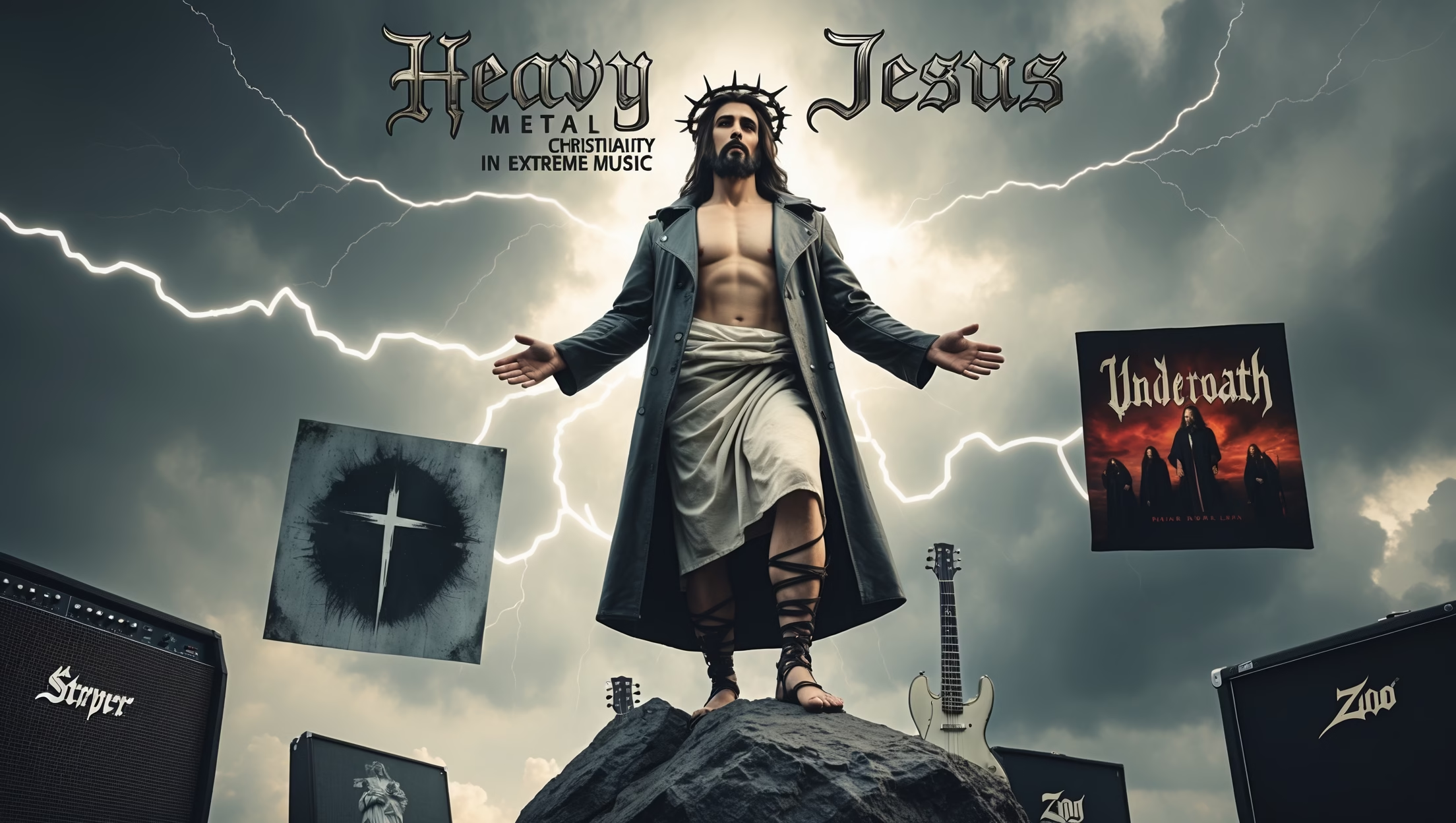From Spandex Evangelists to Screamo Confessions
For decades, heavy metal has been viewed as the rebellious soundtrack of youth—loud, abrasive, and often at odds with organized religion. Yet beneath the distortion pedals and double bass drums lies a surprising truth: Christianity has found a home in the very genre that some once called “the devil’s music.” From the glam theatrics of the 1980s to the guttural growls of modern metalcore, the figure of Jesus continues to inspire, provoke, and challenge in extreme music.

First Wave: The 1980s and the Birth of Christian Metal
The 1980s marked the first serious foray of Christian musicians into the heavy metal scene. Their mission was clear: infiltrate the sonic world of secular rock with the Gospel—often using the same leather, volume, and pyrotechnics as their non-Christian peers.
Stryper: Yellow and Black Evangelists
Few bands embodied the paradox better than Stryper, whose yellow-and-black spandex outfits and high-pitched harmonies took arenas by storm. Their 1986 album To Hell with the Devil went platinum, a first for a Christian metal band. Between songs about salvation, they famously threw Bibles into the crowd, blending glam metal spectacle with unapologetic evangelism.
Trouble: Doom Metal Psalmists
While Stryper sparkled under arena lights, Trouble delivered slow, crushing riffs reminiscent of Black Sabbath—but with lyrics pulled directly from the Psalms and prophetic books. Their self-titled 1990 album became a touchstone for “doom metal,” proving that biblical lament and apocalyptic hope could resonate in the deepest, heaviest tones.
Unexpected Theology in Dark Places
The 1990s and 2000s saw a shift: Christian themes were no longer just the domain of explicitly “Christian bands.” Faith began to surface in unexpected corners of extreme music—even in groups with seemingly anti-Christian imagery.
Ghost: Eucharist Behind the Masks
The Swedish band Ghost appears onstage in papal robes and ghastly face paint, singing about Satanic masses. Yet some analysts have noted a hidden theological depth—particularly Eucharistic language embedded in songs like Body and Blood. Whether intended as critique, parody, or mystical inversion, the presence of liturgical imagery has sparked debate about subversion versus sincere sacramental reflection.
Underoath: Screamo’s Honest Confessions
In the early 2000s, Underoath emerged from the screamo/post-hardcore scene, blending Christian faith with raw, emotional vulnerability. Albums like Define the Great Line wrestled with doubt, sin, and redemption. The band’s willingness to publicly address faith crises—including members leaving and returning to Christianity—resonated with fans navigating their own spiritual turbulence.
Zao: Metalcore’s Cry of Dereliction
Hailing from West Virginia, Zao pushed metalcore into deeply theological territory. Songs like Psalm of the City of the Dead and Savannah echo Christ’s cry of abandonment on the cross: “My God, why have you forsaken me?” Their music embodies a theology of suffering—faith not as triumphalism, but as raw honesty before God.
Cultural Impact: Mosh Pits, Ministry, and Controversy
Heavy metal’s subculture has proven both hostile and surprisingly open to Christian engagement.
Festival Ministry and Mosh Pit Chaplains
At Christian festivals like Cornerstone and Audiofeed, “mosh pit chaplains” have become a fixture—volunteers trained to help injured concertgoers, mediate fights, and even pray with fans. The mosh pit, often seen as chaos incarnate, becomes a place of compassion and connection.
Biblical Imagery in Metal Lyrics
A 2022 lyrical analysis revealed that 37% of metal bands reference biblical themes or imagery, whether in the form of apocalyptic visions, satanic rebellion, or Christ-like sacrifice. Even secular or anti-Christian bands draw from Scripture’s rich symbolic language to frame their narratives of conflict, hope, and despair.
The Norwegian Black Metal Divide
The early 1990s saw the infamous Norwegian black metal scene engage in violent anti-Christian acts, including church burnings. Yet in an ironic twist, the 2000s brought a revival of Christian metalcore bands touring the same regions—bands like Extol and Pantokrator reclaiming aggressive music for Christ-centered themes. This juxtaposition highlights heavy metal’s capacity to house both blasphemy and belief.
Why Heavy Metal Jesus Matters
Heavy metal’s attraction to Christian themes is more than cultural curiosity—it reveals the genre’s deep engagement with ultimate questions.
- Faith in Counterculture – Christianity’s message of radical grace resonates in a space often defined by alienation and rebellion.
- Theological Honesty – Metal’s willingness to confront suffering, evil, and death aligns with biblical lament traditions.
- Cultural Literacy – Recognizing Christian references in extreme music helps listeners understand how faith interacts with—and sometimes redeems—subcultural expressions.
The continued presence of Jesus in heavy metal shows that the Gospel is not confined to quiet pews or acoustic guitars. It can roar from a stack of Marshall amps, scream in distorted growls, and inspire in the most unlikely of venues.
Conclusion
From the flashy theatrics of Stryper to the anguished cries of Zao, Christianity has carved out a place in heavy metal that is as loud as it is sincere. Sometimes the theology is explicit evangelism; other times it hides behind metaphor, critique, or even blasphemy. But in each case, the figure of Jesus continues to provoke, challenge, and inspire—reminding us that the Gospel can travel down even the most distorted of paths.








